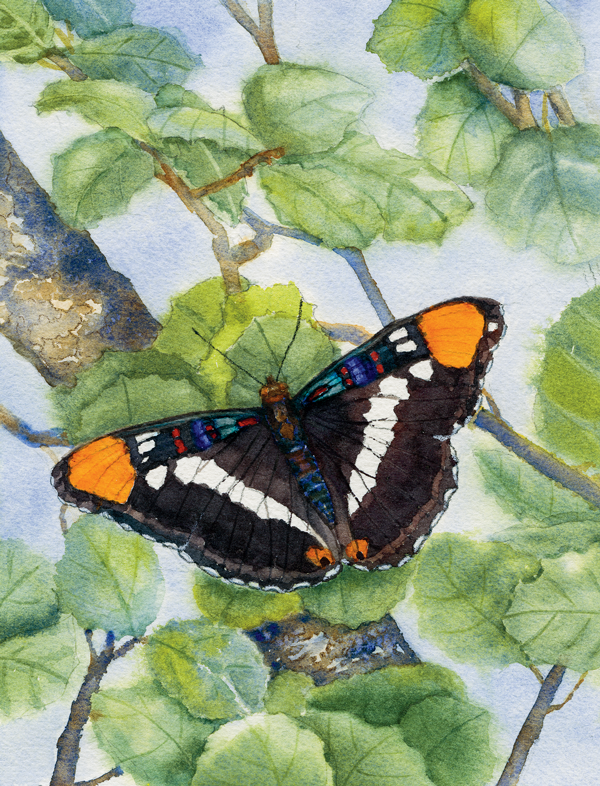
Secrets of the Oak Woodlands: Plants and Animals among California’s Oaks
by Kate Marianchild
Excerpts from the California sister chapter
“The first time I see a California sister butterfly flutter by each spring, my heart flutters a bit too. These are the most colorful of our early spring “flying flowers” and their appearance reassures me that life in the oak woodlands is gliding along much as it has for millennia. It means female butterflies laid their eggs late the previous summer or fall, caterpillars hatched and ate oak leaves, and just before winter the caterpillars built nests to protect themselves from the cold. ”
Camouflage, anti-freeze
“Sisters lay green eggs singly on the upper edges of the leaves of mature, usually evergreen, oaks—most frequently coast live, interior live, and canyon oaks. The
larva (caterpillar) that hatches from one of these eggs is camouflaged in speckled oak-leaf green. As it feeds and grows, the larva sheds its skin four times over a period of weeks. Each new “instar” (larval stage) looks different from the previous one. The fifth and last is perfectly camouflaged with a green body and six pairs of yellowish “horns” that echo…” ( p. 66)
Excerpts from the Ecology Reference Guide at end of California sister chapter. (Ecology Reference Guides are found at the end of most chapters.)
Food Requirements:
Adults eat dung, carrion, flowing sap, rotting fruit, fruit pecked open by birds, and aphid honeydew; nectar from California buckeye, toyon, yerba santa, dogbane, giant hyssop, goldenrod, and coyote bush; also minerals and amino acids from moist mud. Larvae eat the green leaves of oaks, especially canyon and other live oaks.
Reproduction and migration:
One to three generations of adults emerge and fly per year, beginning in March or April and ending in November at lower elevations. They lay eggs singly on tips of oak leaves, on the upper surfaces. There are five larval instars. Partially grown larvae overwinter. In early spring they complete their larval stages and pupate. Females migrate far and wide in fall for unknown reasons. (p. 68-69)
